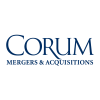Software as a Service (SaaS) is the business model du jour in software. High valuations of SaaS pure play public companies and of private company sellers catch our attention. A closer look at an index of public SaaS companies shows valuations as low as 1x and as high as 9x trailing revenues. A list of recent M&A transactions involving SaaS companies shows transaction values ranging from 2x to 13x trailing revenues. The evidence shows that recurring revenues alone are not enough to drive high value. SaaS is about more than adopting a new revenue model. Recurring revenues are rated by buyers in context of other attributes of your business, attributes that are important to increase profitability and decrease risk. What sets the highest performing SaaS companies apart? The answers are Service, Value, Leverage and Efficiency. First, they understand providing service is key to success. They are focused on meeting the business needs of their customers, not on building technology. Their solutions are highly functional, intuitive, reliable, and easily deployed by customers. Customer support roles are staffed by knowledgeable personnel committed to solving problems. Second, they provide real value to customers, which creates customer loyalty and retention. Value can come in many forms: functionality of the application, best practices expertise in the business process, cost efficiency, regular product release cycles to keep the solution current, and easy ability to integrate with other applications, whether that application is behind a customers firewall is another SaaS vendors best of breed application. Third, company operations are organized to maximize the benefit from leverage that software provides to a service company. The SaaS application is designed to enable rapid deployment with a minimum of staffing. Complex business processes are simplified through software that is highly configurable to meet customers needs. New customers produce disproportionately high profit margins at scale. Fourth, the company is organized to be efficient while being effective. This applies not only to product development and implementation but perhaps even more importantly to the sales function. Since the price point for SaaS applications is lower, the sales organization of a successful SaaS company must have the skills and tools to reach the customer, present the value proposition, and close the sale on a much shorter cycle. A version of this article originally appeared in Soft•letter and Software Success.
